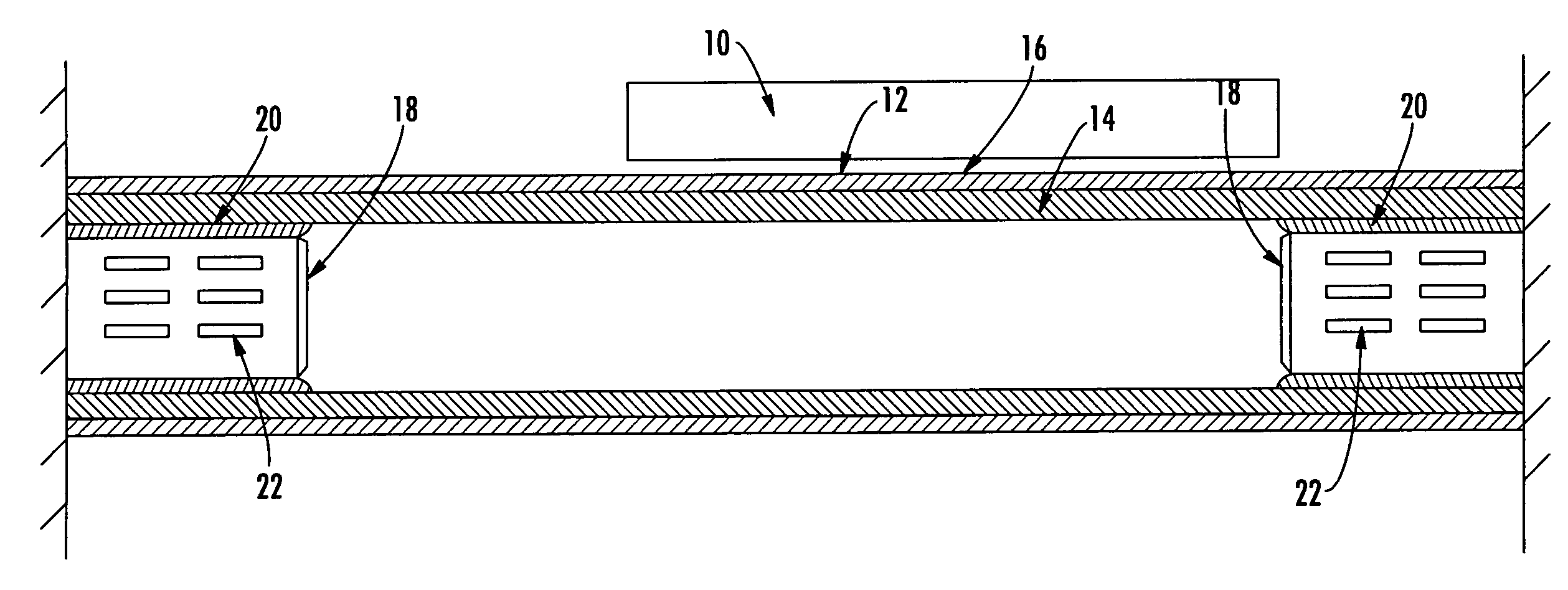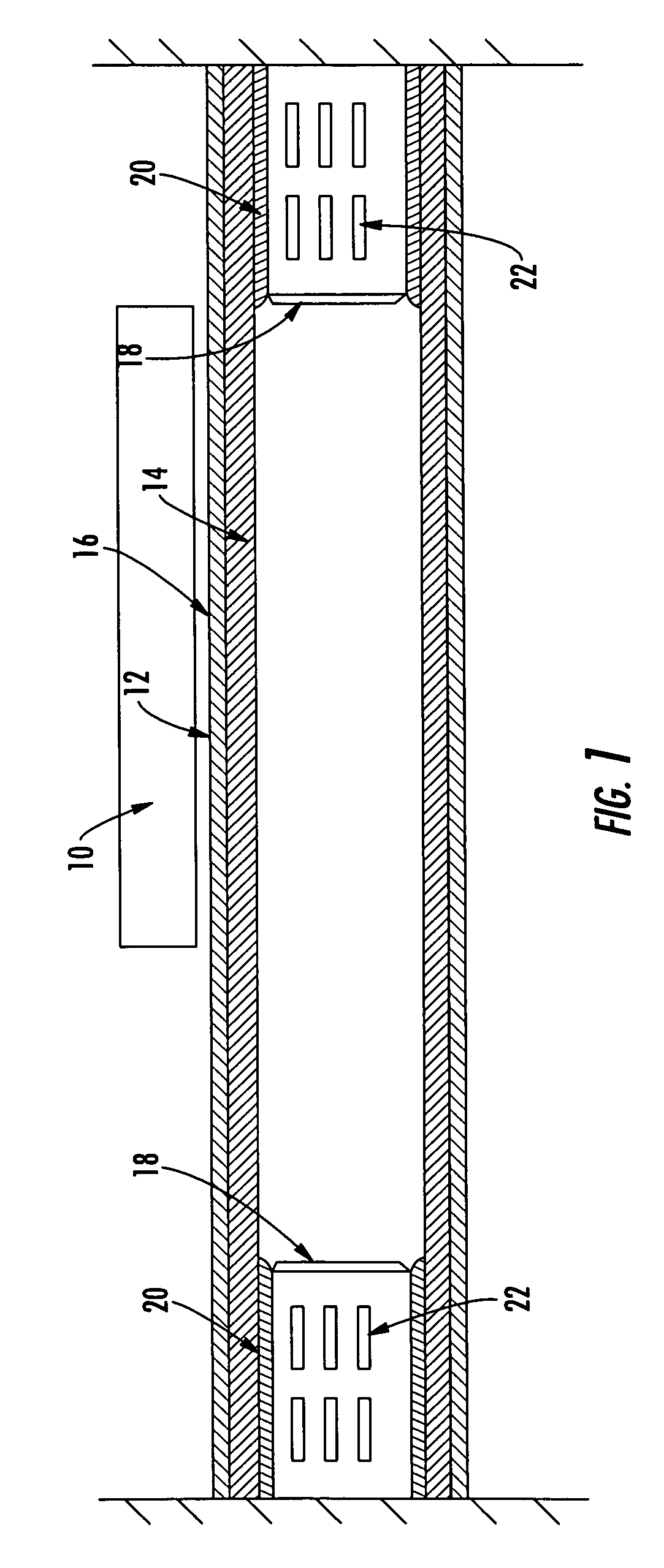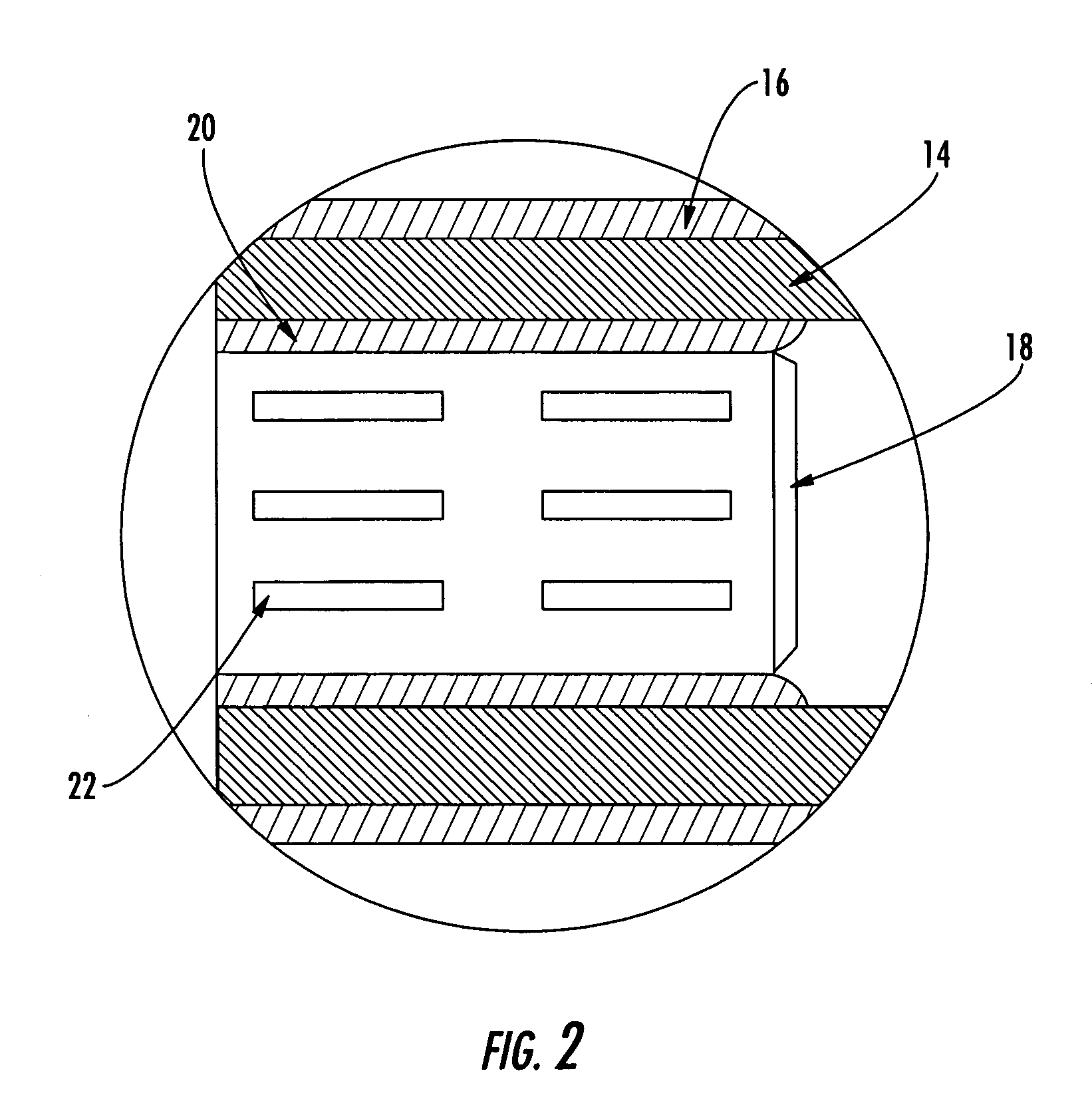Winding core and associated method
a core and core technology, applied in the field of winding cores, can solve the problems of affecting the performance of the core, the engaged end of the paperboard roll is subjected to substantial torque force, and the cores are not compatible with existing winding and unwinding machinery, so as to improve the gripping surface, reduce the risk of slippage, and increase the chuck factor
- Summary
- Abstract
- Description
- Claims
- Application Information
AI Technical Summary
Benefits of technology
Problems solved by technology
Method used
Image
Examples
Embodiment Construction
[0026]The present invention now will be described more fully hereinafter with reference to the accompanying drawings, in which some, but not all embodiments of the invention are shown. Indeed, this invention may be embodied in many different forms and should not be construed as limited to the embodiments set forth herein; rather, these embodiments are provided so that this disclosure will satisfy applicable legal requirements. Like numbers refer to like elements throughout.
[0027]Referring now to the drawings and, in particular to FIG. 1, there is shown a winding core assembly 10. The term “winding core” is not meant to be limiting, and it is understood that the term winding core can be any core, reel, tube, cylinder, or the like used in a winding operation. Winding may be used to wind and unwind rolls of web materials such as polymer film, paper, nonwoven or woven textile, metal foil, sheet metal, and the like.
[0028]In a preferred embodiment, FIG. 1 illustrates that the winding core...
PUM
 Login to View More
Login to View More Abstract
Description
Claims
Application Information
 Login to View More
Login to View More - R&D
- Intellectual Property
- Life Sciences
- Materials
- Tech Scout
- Unparalleled Data Quality
- Higher Quality Content
- 60% Fewer Hallucinations
Browse by: Latest US Patents, China's latest patents, Technical Efficacy Thesaurus, Application Domain, Technology Topic, Popular Technical Reports.
© 2025 PatSnap. All rights reserved.Legal|Privacy policy|Modern Slavery Act Transparency Statement|Sitemap|About US| Contact US: help@patsnap.com



